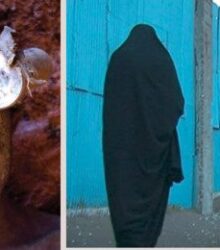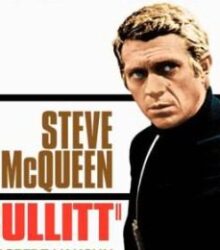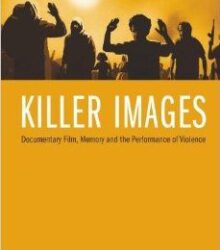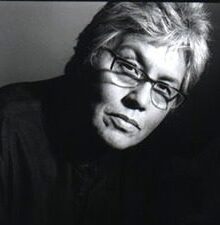The Discrete Art of Lourdes Portillo: 3D Animation Evokes the Liminal Spaces of Dream
By Mary Moylan
The DocuThinker Summer Travel Blog continues on the road with a special interview from Lourdes Portillo.
On one particularly bright San Francisco morning in early June, Docuthinker caught up with Lourdes Portillo in a North Beach café to discuss her latest film project- State of Grace. If Portillo’s films have a signature- it is the careful, unique and innovative intent to tell the right story. Notable collaborations and creative partnerships also characterize her body of work. Here, Portillo introduces her filmmaking partner, the up and coming 3D animation artist, Andrew Benson, and the nature of communicating a dream space through the making of this film. What transpires is a revelation of the capacity for cinema to transform time and space, and an understanding of the medium as a technology of memory. Portillo offers us as always, an inquiry into the relevant psychological and aesthetic aspects of experimental documentary.
Portillo offers some background for this project:
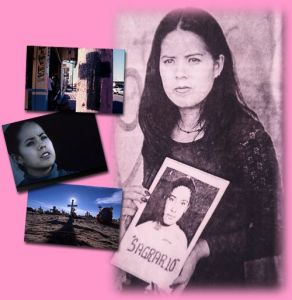 LP About ten years ago I finished Senorita Extraviada– and it was a lot of work you know, in getting the film out because no one had heard about the murders in Cuidad Juarez. So, I had a lot of invitations and a lot of trips to make all over the world. So, I traveled everywhere and I was so exhausted. I would come home with one suitcase and then just pick up another one-and keep on going. And, eventually, I got sick. After ten years time, I got really sick, I got cervical cancer. That was three years ago, and it stopped my whole career and my whole life, very abruptly. And, I didn’t know how I was going to go on, and it’s difficult to talk about. You have something very dynamic and it just screeches to a halt. And, that moment when it screeched to a halt, is the moment I had this incredible dream, this fabulous dream that enabled me to go on in a great way with a lot of spiritual nourishment. So the film is about that one dream
LP About ten years ago I finished Senorita Extraviada– and it was a lot of work you know, in getting the film out because no one had heard about the murders in Cuidad Juarez. So, I had a lot of invitations and a lot of trips to make all over the world. So, I traveled everywhere and I was so exhausted. I would come home with one suitcase and then just pick up another one-and keep on going. And, eventually, I got sick. After ten years time, I got really sick, I got cervical cancer. That was three years ago, and it stopped my whole career and my whole life, very abruptly. And, I didn’t know how I was going to go on, and it’s difficult to talk about. You have something very dynamic and it just screeches to a halt. And, that moment when it screeched to a halt, is the moment I had this incredible dream, this fabulous dream that enabled me to go on in a great way with a lot of spiritual nourishment. So the film is about that one dream
MM I remember the last time I saw you, it was at the Academy of Motion Picture Arts and Sciences panel discussion, and you were asked if you could make a film about anything you want-what would that be? And your answer was that it would be about dream and memory. Now, almost two and one half years later, you are actually doing just that. Not everyone will do this.
LP (laughs) I think there is this thing about having to make a living that is very important, you know, and to do well in your career. And, I’ve kind of forgone that a little bit. I thought, I needed to make art as I see it. And this is what makes me feel good. And this is what I realized; that I can’t control anything. I can’t control my children. I can’t control the weather. The only thing I can control is my work. I can create it and mold it as I wish. And that was wonderful, that realization.
But, in any case, the dream was, basically, I woke up in the morning and I started thinking that I had had a dream. You know, when you have a dream and you want to remember it and it’s so evanescent and you don’t want it to go away. So, I stopped and I said, I have to remember it all. And I started remembering the dream and the dream was wonderful. I was sitting in a circle like I am now and I had my mother and my father next to me and my mother bent down and said to me- “You must have faith” you know, and then my father bent down and said to me “You can do it I know you can do it, no problem.” (Laughing) It typified the way that they spoke to me, you know. And, all of the sudden I see all of these people dancing around in a big circle, as if in a Pow -Wow. If you’ve seen a Pow- Wow- they are so beautiful. Everyone is dancing. I started looking at their faces and they were all people that I knew. And I said, oh my God, they are all people who have loved me. And that just stunned me. And it was not just the people I knew in my life, but they were my ancestors. And they were there too, dancing, very rhythmically. I was just overwhelmed, overwhelmed with love. And that was just fabulous. Then, all of the sudden, I see this little old lady, and I’m an old lady, but, another little old lady- little and frail, comes walking up next to me and I realize that it is my grandmother. It’s just devastating. She reaches out and grabs hold of me, and I feel this enormous gratitude. And that gratitude is what enabled me to do all of the treatments and all of the medical things that I had to do in order to get well. So, in visualizing that and the music and the feeling that I tried to capture of gratitude and love is very profound and difficult to do, I think, to capture the feeling. So, basically it’s that. It’s about light. Because when my grandmother came, she went like this with her hands and out of this, came all of this light. (laughs)You know it’s a very kind of a spiritual dream, and every time I see the light, I realize that we are all light. I mean it’s weird, I’ve never been religious, but, it’s like something innate in us as human beings. I became very aware that we are just one organism floating through space, basically. That is what I tell my grandchildren. The dream was just very energizing and very beautiful about family and love and being connected. And it came in a moment when I was feeling boom-zero-just devastated.
MM I would like to hear a bit about your decision- on the technical side- you are such an important visionary- your body of work has a powerful vision. So, this vision of the dream, and now, having to carry this through. And, your choice of technique- I’ve seen just the clips, and I’m struck by this layering effect. It has different effects on perception I guess-almost like multiple realities?
LP I chose a person who could actually address all of that, Andrew Benson. He is a wonderful artist. And I thought that Andrew could really capture it – like anything that I would say, and he would draw, and it would add to my notion of it. Even though it’s very computer generated, it doesn’t have the softness of the old time hand animation. This technology is completely different. So, I like that it is so modern and so new and he is so young and has this other notion-so, together we created this effect of layering and alluding to things rather than just representing them in a very realistic way. Does that make sense? You know, in my collaborations, people really add to the work and this keeps me from only being faithful to only my own ideas and saying things like- maybe this would work or maybe that…My collaborators, they are like my brothers and sisters and they are not my employees in any sense.
[LP– Addresses my comment about the trajectory of her body of work:]
LP “People sometimes want the artist to have a style that they kind of refine and develop over the course of many years, and then they have their great masterpiece that kind of reflects all of the work done before. And for me it’s much more important to experiment and to play. I think that my thing is- that it’s not so much having that one style, but having maybe one ideal and one story or one thing to tell. For me the story is very important and I’m a person who is very privileged to have this voice. A lot of people in this world don’t have this voice, and so if I could speak the truth even a little bit I think I’m doing a great job.
MM You’re one of my favorite storytellers. I’m wondering how you came to this decision to work with Andrew and ultimately, to this decision to do the 3D animation.
LP I love his art. He is very abstract, He does a lot of abstract work. This is what he is known for, if you look on the internet- this is what you will find. I saw the facility he had for doing these things, and, so, I said come on Andrew, let’s do something. I knew he would be great to do this.
MM How have you understood this particular technology, the strength of it, to bring forward your vision?
LP Well, I wanted it not to be so representational. I wanted it to have a sense of air- in between you know. In other words, for people to read different things into it, you see. And, if you are very clear, and you have this grandmother just the way I tell it, and I just tell you; this is the way it is, I think it would be boring. And, it had to do with the dream-and a dream allows for a lot of freedom. So, I thought Andrew could do that, allow for this space and air.
Stay tuned for the completed film project of State of Grace. I’ll leave you with a quote from Giles Deluze:
“Cinema not only puts movement in the image, it also puts movement in the mind. Spiritual life is the movement of the mind. One naturally goes from philosophy to cinema, but also from cinema to philosophy…the encounter between two disciplines doesn’t take place when one begins to reflect on the other, but when one discipline realizes that it has to resolve, for itself and by its own means, a problem similar to one confronted by the other.”

